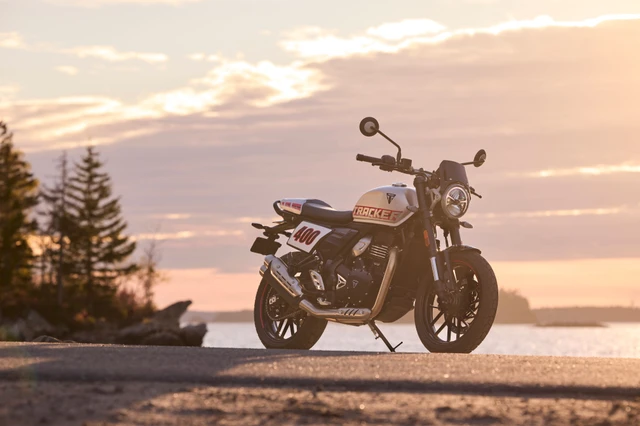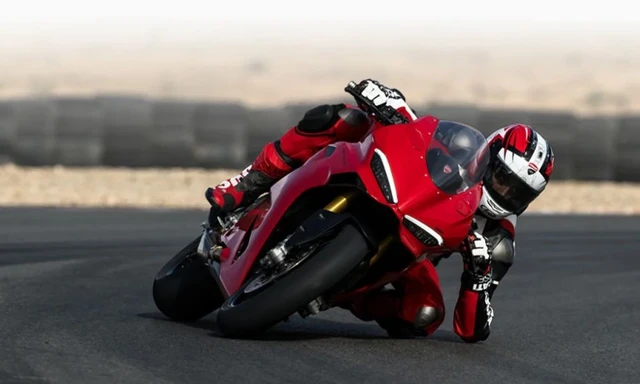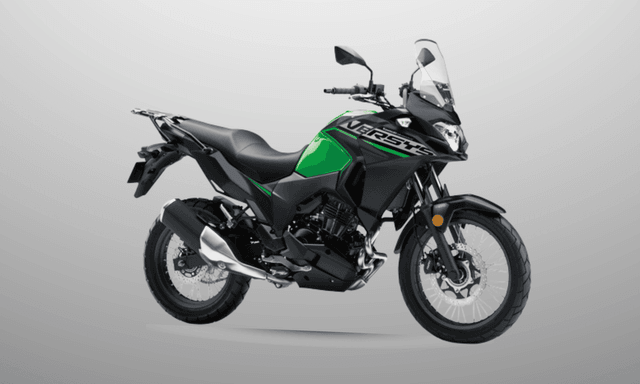How to Use the Guide Lines on Your Reverse Camera?

If you have recently leased a car or bought a new one, the chances are that your car is already installed with a backup camera. While the majority of people use this only to get a clearer view of what's behind them while backing up, there are a lot more functions to it. You might have witnessed there are lines present on the backup camera. Understanding how to utilise these lines can help you gauge distance, parallel park and much more. If you are new to such technology, this article is an ideal read for you. Here you will find details about how to utilise this tool to its fullest.

Understanding the lines
Most users know how to function backup camera lines, and this is mainly because of its easy design. Most camera manufacturers utilise the classic stoplight method, in which green means go, red means stop and yellow means caution. When you use such types of cameras to navigate in a tight space or tricky parking spot, it will help you realise the distance between your car and the curb and also help you scale the distance.
If all this sounds rather confusing to you, you can always refer to the manual provided with the car to understand it better. This way, you will know how much wiggle room you have on each side of the camera image, especially when it is red.
How do you use backup lines?
Using backup lines is rather easy. However, this explicit list will tell you everything you need to know.
- Vehicle Width:
This is the first thing you need to keep in mind while trying to understand the backup camera lines. Understanding the width of the vehicle is important when it comes to squeezing your car in tight spaces. The two lines at the edge of your camera screen show you how broad your car is.
- The Safe Zones:
This mainly depends on the manufacturer or specific model of backup camera you have. The green and yellow zones are the usual indicators of space. The majority of cars have at least 6 feet of space behind it where the green lines show. Below that are the yellow lines, which is the safe distance you should keep between the car and the curb.
- The Danger Zone:
This is what the red lines in the camera display portray. Much like the safe zones, this too depends on the manufacturer as to how far they are set. Usually, these are at a distance of 15 to 18 inches. However, red zones should be avoided at all costs as they mean your car can hit the wall. This is why if your car is near the red lines, you should be rather careful. It will help if you ask someone to be another pair of eyes to physically understand how much space is left.

Photo Credit: www.carcommunications.co.uk
Additional features
The best feature of a well-made backup camera is its ability to help you with parallel parking. Here are some steps that can help you with the same:
- Position your car in a way that both the front and rear bumper and even to the car parked in front of yours. Check to ensure that there is at least half your car's length's worth of space between both the car your will park in between.
- Move forward as long as the rear wheels of your car are even with the rear bumper of the car you will park behind.
- Turn your wheels sharply towards the curb and back your car up
- Once the front of your car has roughly aligned with the rear ones of the car in front of you, turn your wheels away from the curb and back up till you are in perfect position. Once done, straighten the car out.
This whole process can be quite confusing and stressful. However, with the live feed from your backup camera, the whole process becomes a lot easier, even for an amateur driver. The camera can tell you if your car will bump into an unforeseen blockade.

Photo Credit: www.toyotavacaville.com
Trending News
 1 min readTriumph Tracker 400: In Pictures
1 min readTriumph Tracker 400: In Pictures 1 min readTriumph Tracker 400 Unveiled in UK
1 min readTriumph Tracker 400 Unveiled in UK
Latest News
 Janak Sorap | Dec 17, 2025Triumph Tracker 400: In PicturesTriumph has unveiled the new Tracker 400 based on the Speed 400. Here’s a quick look at the motorcycle in pictures.1 min read
Janak Sorap | Dec 17, 2025Triumph Tracker 400: In PicturesTriumph has unveiled the new Tracker 400 based on the Speed 400. Here’s a quick look at the motorcycle in pictures.1 min read Jaiveer Mehra | Dec 17, 2025Tata Sierra Smart Plus Revealed In Official Pictures: What Do You Get For Rs 11.49 Lakh?While nearly everyone has seen the Sierra in pictures and many in person at dealerships, you’ll likely only have seen the top models. But what is the base variant like?2 mins read
Jaiveer Mehra | Dec 17, 2025Tata Sierra Smart Plus Revealed In Official Pictures: What Do You Get For Rs 11.49 Lakh?While nearly everyone has seen the Sierra in pictures and many in person at dealerships, you’ll likely only have seen the top models. But what is the base variant like?2 mins read car&bike Team | Dec 17, 20252025 Ducati Panigale V2, Streetfighter V2 Recalled In The USThe recall states that two ABS fuses may have been inadvertently fitted in the wrong positions during wiring assembly and could increase the risk of a crash.3 mins read
car&bike Team | Dec 17, 20252025 Ducati Panigale V2, Streetfighter V2 Recalled In The USThe recall states that two ABS fuses may have been inadvertently fitted in the wrong positions during wiring assembly and could increase the risk of a crash.3 mins read Jafar Rizvi | Dec 17, 2025Updated Bajaj Pulsar 220F Does Not Get Dual-Channel ABS; Company Issues ClarificationBajaj Auto has confirmed that the updated Pulsar 220F does not feature dual-channel ABS, contradicting earlier reports.1 min read
Jafar Rizvi | Dec 17, 2025Updated Bajaj Pulsar 220F Does Not Get Dual-Channel ABS; Company Issues ClarificationBajaj Auto has confirmed that the updated Pulsar 220F does not feature dual-channel ABS, contradicting earlier reports.1 min read Janak Sorap | Dec 16, 2025Triumph Tracker 400 Unveiled in UKBased on the Speed 400’s platform with the tune from the Thruxton 400.1 min read
Janak Sorap | Dec 16, 2025Triumph Tracker 400 Unveiled in UKBased on the Speed 400’s platform with the tune from the Thruxton 400.1 min read car&bike Team | Dec 16, 2025Kawasaki Versys-X 300 Offered With Rs 25,000 DiscountAfter the discount, the entry-level Kawasaki Adventurer tourer is priced at Rs 3.24 lakh (ex-showroom).3 mins read
car&bike Team | Dec 16, 2025Kawasaki Versys-X 300 Offered With Rs 25,000 DiscountAfter the discount, the entry-level Kawasaki Adventurer tourer is priced at Rs 3.24 lakh (ex-showroom).3 mins read
 Janak Sorap | Dec 11, 2025Harley-Davidson X440 T First Ride Review: Smarter and SharperHarley-Davidson has taken the X440 and given it a more focused and engaging twist. The result is the X440 T—essentially the same platform but updated in areas that give the motorcycle more appeal and riders more thrill.5 mins read
Janak Sorap | Dec 11, 2025Harley-Davidson X440 T First Ride Review: Smarter and SharperHarley-Davidson has taken the X440 and given it a more focused and engaging twist. The result is the X440 T—essentially the same platform but updated in areas that give the motorcycle more appeal and riders more thrill.5 mins read Shams Raza Naqvi | Dec 10, 20252025 Mini Cooper Convertible Review: More Colour On Indian RoadsThe updated Mini Cooper Convertible is set to be launched in the Indian market in the next few days. We drive it around Jaisalmer for a quick review.1 min read
Shams Raza Naqvi | Dec 10, 20252025 Mini Cooper Convertible Review: More Colour On Indian RoadsThe updated Mini Cooper Convertible is set to be launched in the Indian market in the next few days. We drive it around Jaisalmer for a quick review.1 min read Bilal Firfiray | Dec 8, 2025Tata Sierra Review: India’s New Favourite?Marking its return after a few decades, the reborn Sierra has made everyone sit up and take notice. But is it worth the hype?10 mins read
Bilal Firfiray | Dec 8, 2025Tata Sierra Review: India’s New Favourite?Marking its return after a few decades, the reborn Sierra has made everyone sit up and take notice. But is it worth the hype?10 mins read Girish Karkera | Dec 4, 20252026 Honda Prelude First Drive: Domesticated Civic Type RA sporty-looking coupe built to give customers a taste of performance but not at the expense of everyday practicality.5 mins read
Girish Karkera | Dec 4, 20252026 Honda Prelude First Drive: Domesticated Civic Type RA sporty-looking coupe built to give customers a taste of performance but not at the expense of everyday practicality.5 mins read Seshan Vijayraghvan | Nov 29, 2025Mahindra XEV 9S First Drive Review: Big Electric SUV, Bigger ExpectationsThe XEV 9S lands at a time when the EV crowd is growing fast. It’s a big, born-electric, three-row SUV that starts under 20 lakh. It sits close to the XUV700 in size, but the brief is very different. Here’s what it’s like on the road.11 mins read
Seshan Vijayraghvan | Nov 29, 2025Mahindra XEV 9S First Drive Review: Big Electric SUV, Bigger ExpectationsThe XEV 9S lands at a time when the EV crowd is growing fast. It’s a big, born-electric, three-row SUV that starts under 20 lakh. It sits close to the XUV700 in size, but the brief is very different. Here’s what it’s like on the road.11 mins read































































































































